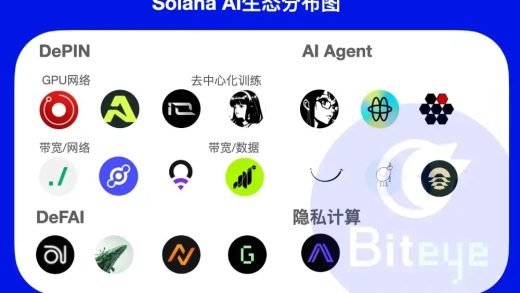I. Industry Risk Analysis
(1) Policy Risk
The smart swimming goggles industry faces multiple risks during the policy incubation period: Currently, there is no unified standard for data security supervision of wearable devices at home and abroad. There may be sudden legislation that could lead to a sharp increase in compliance costs. Sports and health-related smart hardware may be included in the scope of medical device supervision. If the product’s biosensing accuracy is insufficient, it will trigger qualification approval risks. There are differences in cross – border data flow policies among countries. Collecting geographical information such as users’ swimming trajectories may touch on restrictions on the outbound transfer of sensitive data. Against the backdrop of stricter environmental protection policies, if the disposal of the goggles’ battery components does not comply with new regulations such as the EU’s RoHS, it will encounter market access barriers. There are differences in the implementation of subsidy policies for the intelligent transformation of swimming venues at the local level, which may hinder the penetration into lower – tier markets.
(2) Economic Risk
The smart swimming goggles industry currently faces the risk of shrinking demand due to economic cycle fluctuations: Against the backdrop of the slowdown in global economic growth and the trend of consumer segmentation, the non – essential nature of mid – to high – end sports technology products has become more prominent. Fluctuations in consumers’ disposable income have led to a decrease in the repurchase rate. The industry has a long R & D investment and production cycle, and is prone to a broken capital chain during the credit tightening cycle. At the same time, price fluctuations in the international supply chain (such as chips and sensors) and rising energy costs have squeezed the already narrow profit margin.
(3) Social Risk
The smart swimming goggles industry faces the risk of a generational consumption gap. Young consumers (Generation Z and millennials) pursue technology – integrated and data – driven experiences, requiring products to have intelligent functions such as sports monitoring and AR display. However, they are price – sensitive and have low brand loyalty. Middle – aged consumers (Generation X) pay more attention to the durability and professionalism of products, have limited acceptance of new functions, and are prone to rejection due to redundant technology. Although elderly users have a demand for health monitoring, the high threshold of intelligent interaction makes it difficult to convert them into the market. The differences in generational demands lead to a split in product positioning, making it difficult to create a unified hit. Coupled with the contraction of non – essential consumption during the economic downturn, the cost of market education has increased significantly.
(4) Legal Risk
The current legal risks in the smart swimming goggles industry are concentrated in three aspects: In terms of intellectual property, insufficient technological patent layout is likely to trigger infringement disputes. It is necessary to conduct a preliminary investigation of competitors’ patents and accelerate the application for self – owned technologies. In terms of data compliance, if there is no clear authorization when collecting users’ biometric features and sports data or if cross – border transmission is non – compliant (such as violating the EU’s GDPR or China’s Personal Information Protection Law), high – value fines will be imposed. In terms of product liability, there are potential safety hazards such as electric leakage and material allergy in the underwater use scenario. It is necessary to obtain certification from the International Swimming Federation (FINA) and conduct strict quality inspections to reduce the risk of litigation. Entrepreneurs should establish a patent early – warning system, deploy data desensitization technology, and purchase product liability insurance to form a basic defense.
II. Entrepreneurship Guide
(1) Suggestions on Entrepreneurship Opportunities
Currently, entrepreneurship opportunities in the smart swimming goggles industry are concentrated in “smart sports data + upgraded scenario requirements”: Firstly, develop technologically differentiated products integrating functions such as real – time heart rate monitoring, stroke posture recognition, and underwater AR navigation to meet the demand for accurate training data of professional swimmers. Secondly, enter the parent – child swimming market and launch a hardware + App solution for children’s anti – drowning warnings and synchronous monitoring of swimming postures on the parent’s end. Thirdly, design a low – cost time – sharing rental system for swimming pool scenarios, and use Internet of Things technology to achieve automatic equipment disinfection and generate users’ sports reports, thus forming a value – added service model for the B – end.
(2) Suggestions on Entrepreneurship Resources
Entrepreneurs in the smart swimming goggles industry should focus on integrating three types of resources: On the technology side, cooperate with optical laboratories in universities and sports sensor R & D institutions to obtain patent licenses, and lock in a flexible supply chain with precision mold factories in the Pearl River Delta region and AR display device suppliers. On the channel side, verify the demand through crowdfunding data on sports e – commerce platforms, and conduct scenario – based promotion in cooperation with swimming training institutions and triathlon events. In terms of funds, give priority to connecting with sports technology industry funds, use special subsidies for smart wearable devices from local governments to reduce trial production costs, and simultaneously reserve users’ swimming posture data assets to build barriers for subsequent algorithm iterations.
(3) Suggestions on the Entrepreneurship Team
In the smart swimming goggles industry, the entrepreneurship team should first recruit core members with backgrounds in sports science, optical technology, and the development of software and hardware for consumer electronics. The founder should have the ability to control both technological iterations (such as AR display and sports data algorithms) and pain points in the swimming scenario. At the same time, a user experience consultant with the qualification of a swimming coach or a professional athlete should be arranged to ensure that product R & D is deeply bound to user needs. In the early stage of the team, an agile development process (user pool actual – test iterations once every two weeks) should be established, and an interdisciplinary攻坚小组 (interdisciplinary task force) should be set up for the particularities of the swimming scenario (waterproofing, anti – fogging, underwater interaction). The founder must personally lead the integration of supply chain resources (such as lens coating and sensor miniaturization), and bind the core interests of optical engineers and algorithm engineers through a dynamic equity adjustment mechanism.
(4) Suggestions on Entrepreneurship Risks
Entrepreneurs in the smart swimming goggles industry should first control the risk of technological reliability. Verify the underwater sealing performance, optical clarity, and sensor data accuracy through small – batch trial production. It is recommended to cooperate with swimming pool training institutions to obtain real – scenario test feedback. Simultaneously, establish a flexible supply chain and cooperate with factories with experience in waterproof component OEM to disperse the risk of delivery delays caused by a single supplier. Focus on preventing market demand mismatches. Concentrate on the segmented scenarios of swimming enthusiasts (such as anti – fogging and stroke frequency monitoring) rather than the general sports population, and verify the willingness to pay for the product’s core selling points through pre – sales on swimming forums. Complete the compliance reserves for medical certifications of swimming goggles in various countries in advance to avoid regulatory disputes caused by promotions such as anti – blue light when going global. Adopt a subscription – based hardware + data service model to hedge the risk of hardware iteration and unsalable products, and pre – embed technological patent barriers.





